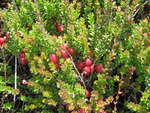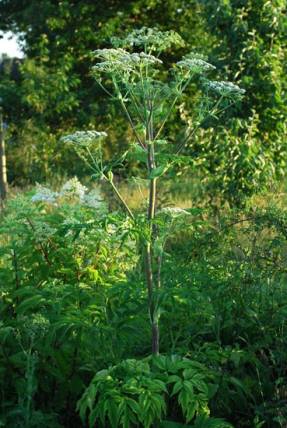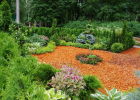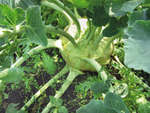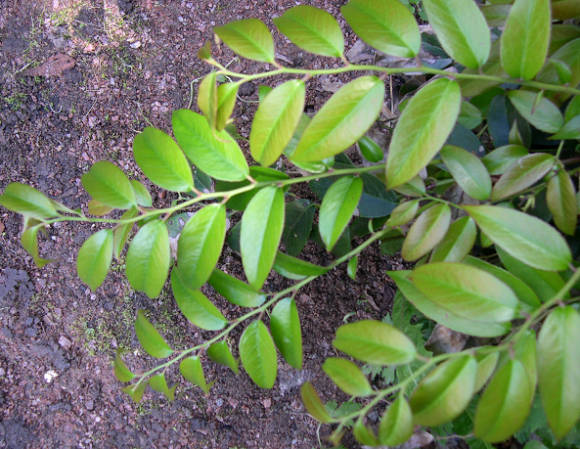Dodecateon, or goose blossom, is a perennial plant with an unusually beautiful flower. It is unpretentious in planting and care, however, it will require some knowledge about this plant from the gardener. Today, 15 species of dodecateon are known, but, unfortunately, not all of them take root in our country, due to climatic conditions.

The scientific name of this genus, Dodecatheon, can be translated from Greek as "god's dozen" or "flower of twelve gods" and apparently reflects the number of flowers in an umbrella-shaped inflorescence. This divine theme is reflected in one of the Russian names of the plant: in pre-revolutionary Russia, the dodecateon was called “a panicadillo (a chandelier is a hanging chandelier in a church).
Dodecateon (Dodecatheon) - a perennial herb from the primrose family. His homeland is the alpine meadows of North America. The plant is somehow surprisingly neat, it looks modest, but impressive. Among the dense bunches of soft, light green, elongated elliptical leaves rise slender stems, crowned with lovely flowers.
The flowers are somewhat reminiscent of cyclamen flowers in shape, purple-pink, white or yellow, up to 3 cm in diameter, collected in an umbrella-shaped inflorescence. Dodecateon blooms from mid-June for 30–35 days.
Vegetative shoots in plants are shortened, leaves are basal, broadly oval or elliptical, up to 10 cm long. Peduncles up to 50 cm in height, in the upper part of which there are numerous very beautiful umbrella-shaped inflorescences, consisting of small (up to 3 cm in diameter) flowers. Their color is white, yellow, pale pink or purple-pink. Their base is decorated with yellow markings and purple specks.
Many species and varieties of dodecateon are known, but, alas, they are rarely found in our gardens. Meanwhile, these very ornamental plants deserve the widest distribution - pretty dodecateon (Dodecatheon pulchellum), dentate dodecateon (Dodecatheon dentatum),dodecateon medium (Dodecatheon meadia)... They bloom during the transition period, in late spring - early summer, when the primroses have long since faded, and other garden grandees are just preparing their buds.
 |  |  |
Growing
Dodecateons are hardy, resistant to any whims of the weather: short but thick fleshy roots tolerate prolonged drought and severe frosts well. Therefore, in the conditions of our middle zone, the plants feel great, live for a long time and bloom profusely. They are hardy without shelter, but preventive mulching is desirable. Often inexperienced gardeners cover them with plastic wrap for the winter. As a result, the death of plants.
They can grow both in the sun and in the shade. For them, areas under the crown of trees are perfect. They are picky about the nutritional value of the soil. Poorly tolerate stagnant water, because juicy roots rot from its excess. Watering and need only during dry spring, and in summer you can forget about them. During the spring, dodecateons have time to grow leaves, form flowers, and bloom by early summer.
At about the end of July, they become dormant and the leaves dry up. This is normal and corresponds to the rhythm of plant development in their homeland. But in very dry weather, it is advisable to water at rest. Dodecateons can live in one place without transplantation for several years.
The soil for their cultivation must be loose, relatively moisture-consuming and free from weeds. It is better to plant them in groups (3-5 outlets) in semi-shady places or in areas illuminated by the morning or evening sun.
For planting, light, drying loams with the addition of rotted wood leaves, crushed fibrous peat, and old compost are preferred. Constant dampness leads to oppression of plants and often to their death. In moist, heavy soil, succulent roots quickly rot.
 |  |
Reproduction
Dodecateons are easy to breed on your site. Propagated by dividing adult specimens, best in autumn or early spring.They are dug out without damaging the roots and divided into parts. Delenki are planted in a place prepared in advance.
Seed propagation is more difficult, it requires attention and patience from flower growers. Seeds are sown in loose soil immediately after harvest or before winter. The sowing area is fenced off - you can neither dig up nor loosen the soil on it.
The fact is that in the first summer, only cotyledons develop from the sown seeds, which soon dry up and disappear, but the roots of the seedlings remain alive. Therefore, it is important to protect the seedbed and not disturb the young plants in any way. You just need to water them if the ground is dry. Seedlings develop slowly and bloom under favorable conditions for the 4th to 5th year.
Use in garden design
Breeders have bred a variety of dodecateon garden varieties and hybrids, including a whole range of colors.
Dodecateons on shady hills, in rockeries, on high ridges near water bodies form charming picturesque corners. But most of all, small flower beds are suitable for them and, especially, miniature rocky hills, where dodecateons look excellent. They are also good for cutting.
Blooming dodecateons are especially well combined with carved foliage and openwork needles - next to astilbe, ferns, young undersized conifers. Such joint plantings are very decorative and do not lose their charm even after the dodecateons become "invisible", i.e. will go to rest.
"Ural gardener" No. 21 - 2017

